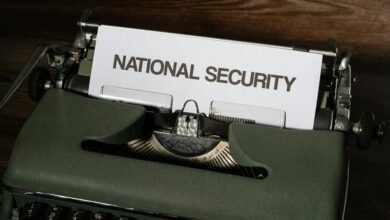National Signal Authentication and Audit Division 2816983867 8334942455 6104214058 2162066650 9296953173 8886632331

Just as a lighthouse guides ships through tumultuous waters, the National Signal Authentication and Audit Division (NSAAD) navigates the complexities of modern communication security. You might wonder how NSAAD’s protocols protect sensitive information from evolving cyber threats. By examining its key components and ongoing adaptations, you’ll uncover not only its impact on information integrity but also the challenges it faces in an ever-changing technological landscape.
The Role of NSAAD in Communication Security
The National Signal Authentication and Audit Division (NSAAD) plays a crucial role in ensuring the integrity and security of communication systems.
You’ll find that NSAAD implements rigorous secure messaging protocols and enforces encryption standards to protect sensitive information.
Key Components of Signal Authentication
Effective signal authentication relies on several key components that work together to safeguard communication integrity.
You need robust authentication methods, including encryption and digital signatures, to ensure secure data transmission.
Additionally, signal verification processes must be implemented to confirm the authenticity of the signals received.
Impact of NSAAD on Information Integrity
While you may not realize it, the National Signal Authentication and Audit Division (NSAAD) plays a crucial role in maintaining the integrity of information across various communication channels.
Future Challenges and Innovations in Signal Authentication
As technology evolves, signal authentication faces significant challenges that necessitate innovative solutions.
You’ll need to explore blockchain technology for its decentralized security advantages and leverage quantum encryption to counteract potential vulnerabilities.
These advancements could enhance data integrity and user trust, ensuring that signal authentication systems adapt to emerging threats while preserving individual freedom and privacy in a digital landscape.
Conclusion
As you delve into the complexities of communication security, you can’t ignore the pivotal role NSAAD plays. With its robust encryption standards and vigilant monitoring, it stands guard against evolving cyber threats. Yet, as technology advances, new challenges loom on the horizon. Will NSAAD adapt swiftly enough to outpace emerging risks? The integrity of our sensitive information hangs in the balance. The future of secure communication is uncertain, but one thing’s for sure—NSAAD’s vigilance is more crucial than ever.




